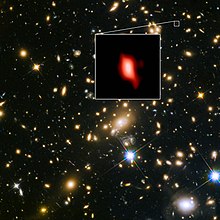The Hubble Space Telescope (often referred to as HST or Hubble) is a space telescope that was launched into low
Earth orbit in 1990 and remains in operation. It was not the first space telescope, but it is one of the
largest and most versatile.
Hubble space telescope

Design of a solution
Many feared that Hubble would be abandoned. The design of the telescope had always incorporated
servicing missions, and astronomers immediately began to seek potential solutions to the problem that
could be applied at the first servicing mission, scheduled for 1993. While Kodak had ground a back-up
mirror for Hubble, it would have been impossible to replace the mirror in orbit, and too expensive
and time-consuming to bring the telescope back to Earth for a refit. Instead, the fact that the mirror
had been ground so precisely to the wrong shape led to the design of new optical components with
exactly the same error but in the opposite sense, to be added to the telescope at the servicing
mission, effectively acting as "spectacles" to correct the spherical aberration.
Solar System discoveries
The collision of Comet Shoemaker-Levy 9 with Jupiter in 1994 was fortuitously timed for astronomers, coming
just a few months after Servicing Mission 1 had restored Hubble's optical performance. Hubble images of the
planet were sharper than any taken since the passage of Voyager 2 in 1979, and were crucial in studying the
dynamics of the collision of a large comet with Jupiter, an event believed to occur once every few
centuries.

Hubble and ALMA image of MACS J1149.5+2223.
Transmission to Earth
Hubble data was initially stored on the spacecraft. When launched, the storage facilities were old-fashioned
reel-to-reel tape drives, but these were replaced by solid state data storage facilities during servicing
missions 2 and 3A. About twice daily, the Hubble Space Telescope radios data to a satellite in the
geosynchronous Tracking and Data Relay Satellite System (TDRSS), which then downlinks the science data to
one of two 60-foot (18-meter) diameter high-gain microwave antennas located at the White Sands Test
Facility in White Sands, New Mexico.[143] From there they are sent to the Space Telescope Operations
Control Center at Goddard Space Flight Center, and finally to the Space Telescope Science Institute for
archiving.[143] Each week, HST downlinks approximately 140 gigabits of data.


